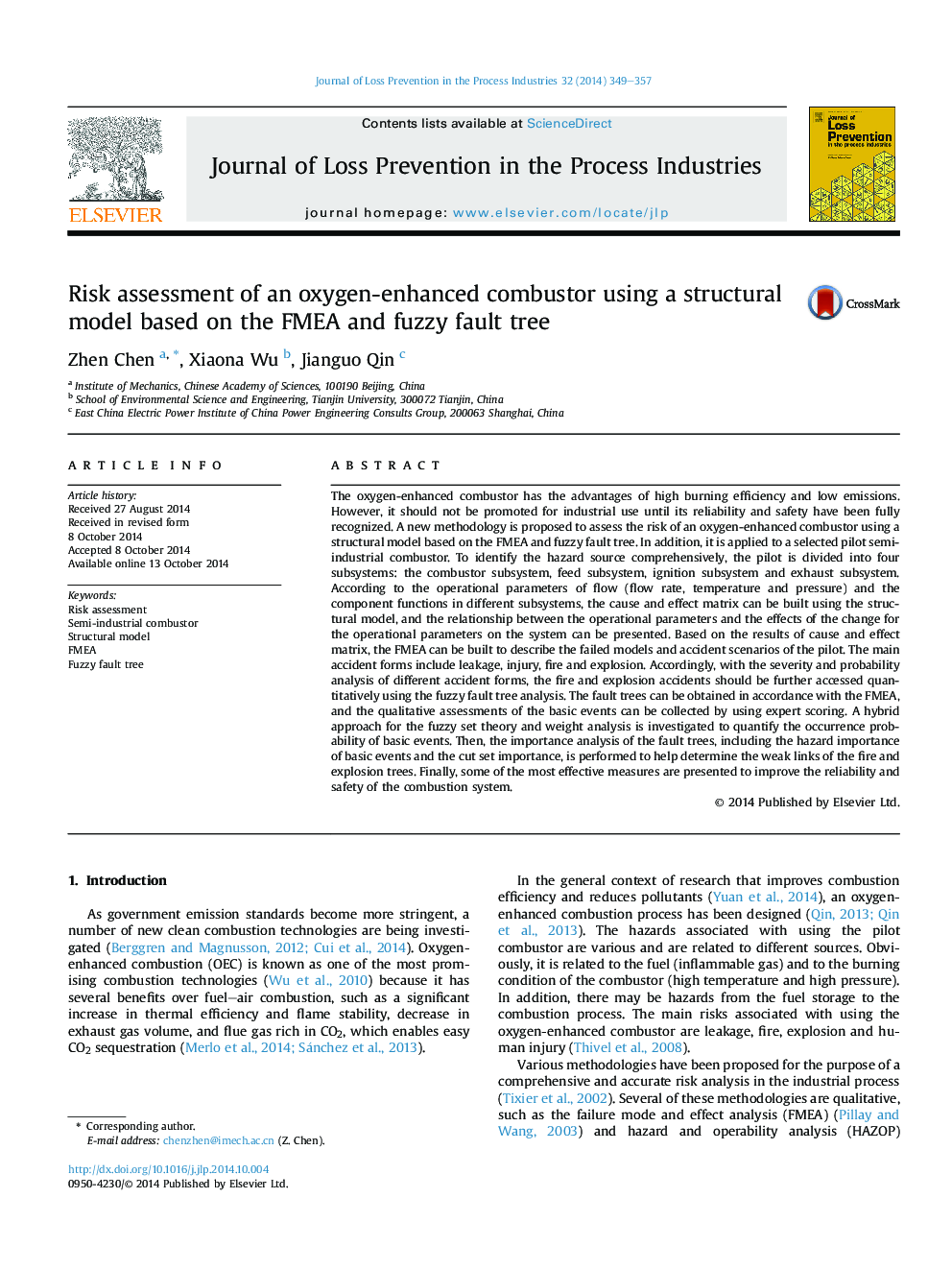| کد مقاله | کد نشریه | سال انتشار | مقاله انگلیسی | نسخه تمام متن |
|---|---|---|---|---|
| 6973534 | 1453276 | 2014 | 9 صفحه PDF | دانلود رایگان |
عنوان انگلیسی مقاله ISI
Risk assessment of an oxygen-enhanced combustor using a structural model based on the FMEA and fuzzy fault tree
دانلود مقاله + سفارش ترجمه
دانلود مقاله ISI انگلیسی
رایگان برای ایرانیان
موضوعات مرتبط
مهندسی و علوم پایه
مهندسی شیمی
بهداشت و امنیت شیمی
پیش نمایش صفحه اول مقاله

چکیده انگلیسی
The oxygen-enhanced combustor has the advantages of high burning efficiency and low emissions. However, it should not be promoted for industrial use until its reliability and safety have been fully recognized. A new methodology is proposed to assess the risk of an oxygen-enhanced combustor using a structural model based on the FMEA and fuzzy fault tree. In addition, it is applied to a selected pilot semi-industrial combustor. To identify the hazard source comprehensively, the pilot is divided into four subsystems: the combustor subsystem, feed subsystem, ignition subsystem and exhaust subsystem. According to the operational parameters of flow (flow rate, temperature and pressure) and the component functions in different subsystems, the cause and effect matrix can be built using the structural model, and the relationship between the operational parameters and the effects of the change for the operational parameters on the system can be presented. Based on the results of cause and effect matrix, the FMEA can be built to describe the failed models and accident scenarios of the pilot. The main accident forms include leakage, injury, fire and explosion. Accordingly, with the severity and probability analysis of different accident forms, the fire and explosion accidents should be further accessed quantitatively using the fuzzy fault tree analysis. The fault trees can be obtained in accordance with the FMEA, and the qualitative assessments of the basic events can be collected by using expert scoring. A hybrid approach for the fuzzy set theory and weight analysis is investigated to quantify the occurrence probability of basic events. Then, the importance analysis of the fault trees, including the hazard importance of basic events and the cut set importance, is performed to help determine the weak links of the fire and explosion trees. Finally, some of the most effective measures are presented to improve the reliability and safety of the combustion system.
ناشر
Database: Elsevier - ScienceDirect (ساینس دایرکت)
Journal: Journal of Loss Prevention in the Process Industries - Volume 32, November 2014, Pages 349-357
Journal: Journal of Loss Prevention in the Process Industries - Volume 32, November 2014, Pages 349-357
نویسندگان
Zhen Chen, Xiaona Wu, Jianguo Qin,